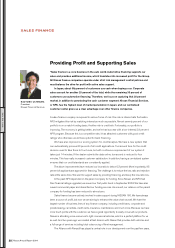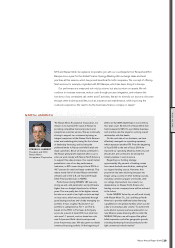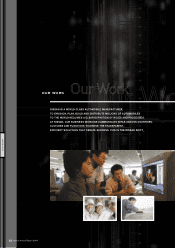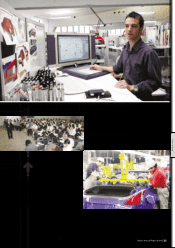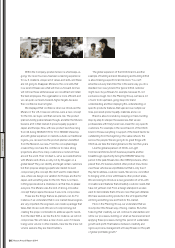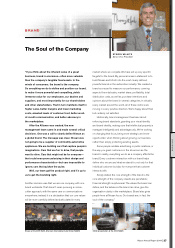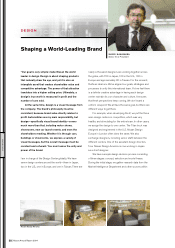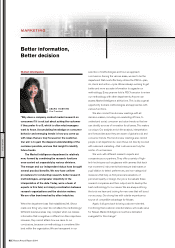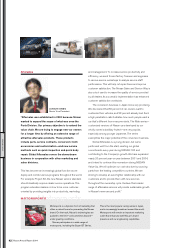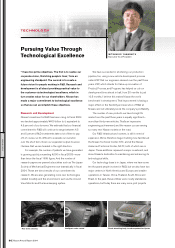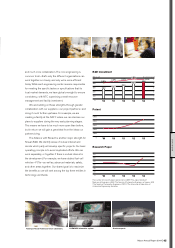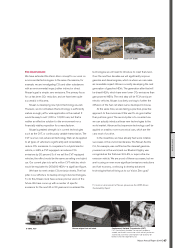Nissan 2005 Annual Report Download - page 40
Download and view the complete annual report
Please find page 40 of the 2005 Nissan annual report below. You can navigate through the pages in the report by either clicking on the pages listed below, or by using the keyword search tool below to find specific information within the annual report.
Nissan Annual Report 2004
38
nearly a thousand designers are working together across
the globe, with 700 in Japan, 100 in the U.S., 100 in
Europe and approximately 30 in Taiwan. For the moment,
that’s an ideal mix. We’ve aligned our goals, strategies and
processes to unify this international team. Yet we feel there
is a definite creative advantage in having each design
center maintain its own character and culture. It ensures
that fresh perspectives keep coming. We don’t want a
uniform viewpoint. We all have the same goal, but there are
different ways to get there.
For example, when developing the Z, we put the three
main design centers in competition, which was very
healthy and stimulating for the entire team. In other cases,
we assign the design to one center. The Titan truck was
designed and engineered in the U.S. Nissan Design
Europe in London often does the same. We also
exchange designers, including senior staff, between the
different centers. One of the assistant design directors
from Nissan Design America is now working in Japan
as a chief designer.
We have a simple design decision process consisting
of three stages: concept, selection and model freeze.
During the initial stage, we gather research data from the
Market Intelligence Department and other sources within
DESIGN
“Our goal is very simple: make Nissan the world
leader in design. Design is about shaping products
that naturally draw the eye, and yet it is also an
intangible asset that creates shareholder value and
competitive advantage. The power of that attraction
translates into a higher selling price. Ultimately, a
design’s true worth is measured in profit and the
number of cars sold.
At the same time, design is a visual message from
the company. The brand’s philosophy must be
consistent, because brand value directly relates to
profit. Automobiles are my main responsibility, but
design—specifically visual brand identity—covers
much more than that, including motor shows,
showrooms, new car launch events, and even the
shareholders meeting. Whether it is through cars,
buildings or showrooms, we express a variety of
visual messages, but the overall message must be
constant and coherent. You must sense the unity and
power of the brand.
I am in charge of the Design Center globally. We have
seven design centers around the world—three in Japan,
two in the U.S., one in Europe, and one in Taiwan. There are
Shaping a World-Leading Brand
SHIRO NAKAMURA
Senior Vice President
OUR WORK
Nissan Design America


